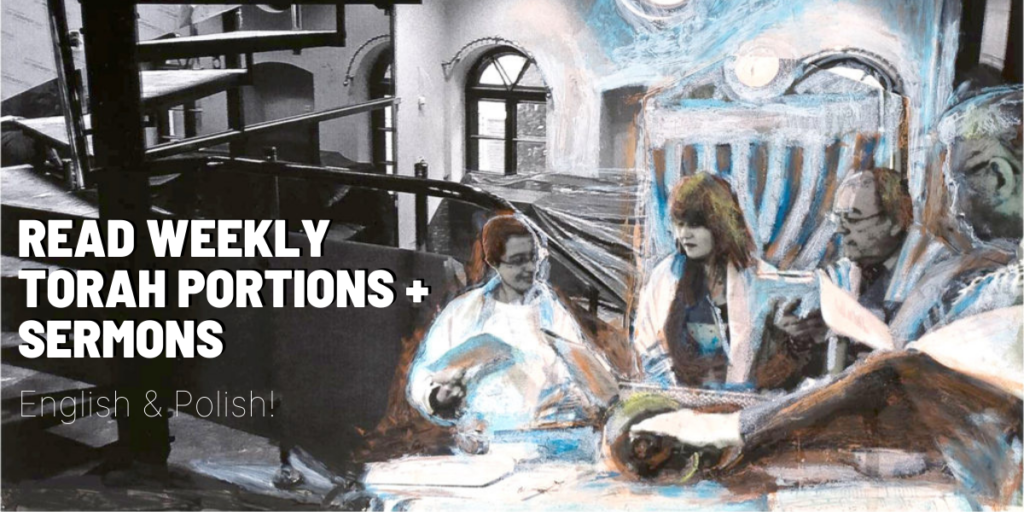
Rabbi Mati Kirschenbaum
[maxbutton id=”6″ url=”https://polishjewsreviving.org/zabat-zachor/” ] The villages of Svaneti, a mountainous region in the South-West of Georgia, are incredibly picturesque. No wonder – they are perched against a backdrop of snowy peaks of Caucasus, the highest mountain range in Europe. However, this prime location is not their defining feature. What sets them apart from Alpine villages of, say, Austria or Switzerland, is a forest of stone towers which dwarfs the wooden houses at their feet. Each of these towers juts out of a different household; as a result, large villages look like mediaeval Manhattans.
The towers of Svaneti might make for a pretty vista, but the reason for their construction is rather ugly. Like many mountainous communities, Svaneti society revolves around clans. Until recently, these clans engage in bloody family feuds. Any disagreement or slight to family honour sparked a spiral of revenge; in family feuds each male member of a clan was responsible for the ‘crimes’ of his fellow clan members. Conflicts between neighbouring clans lasted for decades and sometimes cost dozens of lives. As a result, Svans had to build defensive towers to protect themselves from their neighbours. This construction was a considerable strain on modest resources available in this remote region.
Svaneti’s towers were a material expression of a culture where resentment led to vengeful retaliation rather than to peaceful resolution. In this society, the memory of hurts, wrongs or even mere slights was passed from generation to generation. While this commitment to remembering the past strengthened the individual Svan clans, Svan society as a whole was weakened by internal conflicts.
The history of Svaneti teaches us that misdirected remembrance of the past can trap an entire society in a vicious cycle of violence and revenge. It reminds us we need to be particularly careful when our tradition tells us ‘never to forget’. We should have this lesson in mind on Shabbat Zachor, Shabbat preceding Purim, when an additional Torah reading (Deuteronomy 25:17-19) commands us not to forget how Amalek sneakily attacked the most defenceless among the Israelites soon after they left Egypt. Not, just that, we are ordered to blot out the memory of Amalek from under heaven (Deuteronomy 25:19). Rashi interpreted this as a command to exterminate all Amalekites: men, women, children, together with their cattle.
Deuteronomy 25:17-19 was chosen as a reading for Shabbat Zachor to serve as a background story for Haman, Purim’s chief villain. By positioning Haman in a wide historical perspective, it framed the Purim story as yet another chapter in the everlasting feud between Israelites and Amalekites. It also provided an explanation for the execution of Haman’s sons, who are not mentioned to have supported their father’s genocidal schemes. In resonance with Deuteronomy 25:19, they had to be eliminated on account of their Amalekite descent. The very existence of Haman’s sons was a threat to the Jewish people.
Megilat Esther – the story of Persian taking revenge on their oppressors enjoyed popularity in times of oppression. Whenever the Jews were persecuted, they identified their tormentors as modern Hamans. As a result, the meaning of Amalek broadened; this term came to identify any nation that inflicted suffering on our people. This generalisation allowed our ancestors to find comfort in the Biblical narrative. Nevertheless, it reinforced the belief that the nations that oppressed Jews shall, just like the Amalekites, always hate us; that every individual belonging to them shares this hostile mindset; and that this is never going to change.
Read against the backdrop of this broad and vague understanding of Amalek, Deuteronomistic call for eradication of his memory was interpreted to have justified a retaliation against any group that posed a threat to the Jewish people. In recent years, many nationalistic Israeli Jews have equaled Amalek with the Palestinians. This identification of Amalek with Palestinians is particularly dangerous in the time leading up to Purim. 19 years ago, on Purim 1994, following the listening to the megillah which tells the story of the revenge on Haman’s family, an Israeli religious fanatic, Baruch Goldstein, killed 29 Palestinians in Hebron.
This year the situation in the West Bank is also very tense. Days after an Israeli military raid into Nablus, two Israelis were killed in the village of Huwara on 26 February. This led to a group of Israeli settlers went on a rampage in Huwara, torching dozens of homes. Israeli Minister of Finance Bezalel Smotrich, responsible for civil administration in the West Bank, said:
[perfectpullquote align=”full” bordertop=”false” cite=”” link=”” color=”” class=”” size=””]“I think the village of Huwara needs to be wiped out. I think the state of Israel should do it.”[/perfectpullquote]
These words are a chilling reminder of what happens when a proportionate and planned response is replaced by an idea of a retaliation. In such cases, law and order go to the wayside, opening a door to an ever ending cycle of violence.
This year, when you listen to the stories of Amalek and Haman, I encourage you to think of ways in which you can de-escalate your personal conflicts. We might not be able to bring peace to the Middle East but, wherever we are, we can still model behaviours that will, ultimately, result in a more peaceful world. Shabbat Shalom!


















Leave a Reply